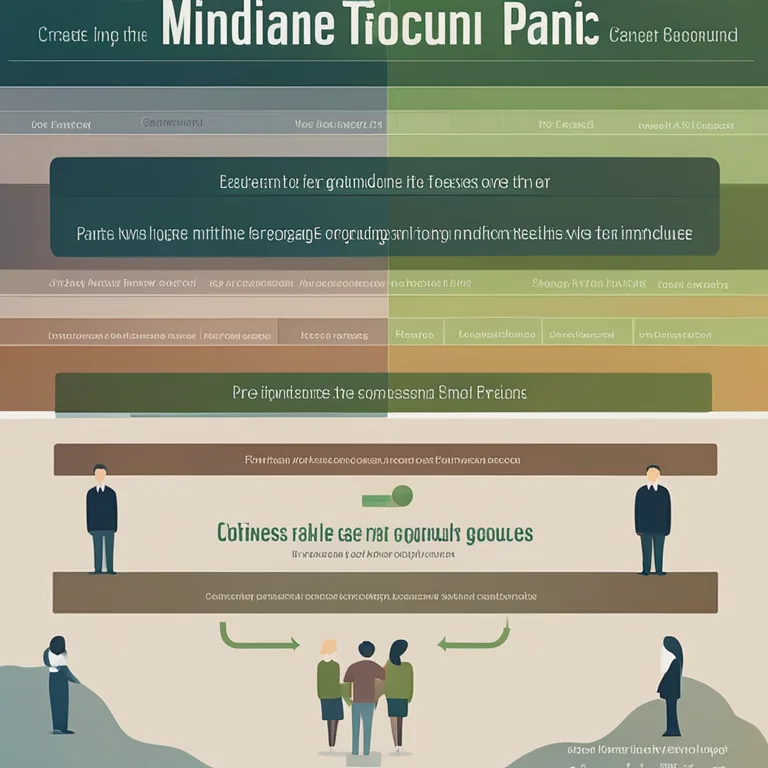
Mindfulness Meditation: Ease for Panic Attacks
Discover the calming power of mindfulness meditation and its efficacy in managing panic attacks. Learn practical techniques for inner tranquility.
article by Hina Kurosawa
The Role of Mindfulness in Panic Management
When panic attacks strike, they can feel like an unrelenting wave, taking over one's sense of control and comfort. It's at these heights of anxiety that mindfulness meditation emerges as a beacon of calm, bringing the tumultuous sea to a gentle lull. Long honored by various traditions, mindfulness finds a special place in modern therapeutic practices, recognized for its effectiveness in emotional regulation and anxiety management. Engaging in mindfulness meditation teaches individuals the art of present-moment awareness, drawing attention away from the fears of the future or the regrets of the past, and anchoring the mind in the 'now.'

Understanding Mindfulness Meditation
At its core, mindfulness meditation is the practice of intentionally focusing on the present moment in a non-judgmental way. It involves observing thoughts, feelings, and bodily sensations as they arise, without getting caught up in them. This detachment helps reduce the intensity of anxiety and prevent the escalation of stress into a full-blown panic attack. Incorporating this form of meditation into one's daily routine can build resilience, cultivating a sense of calm that is less susceptible to the triggers of anxiety.

Starting Your Practice: Simple Techniques
Beginning your journey with mindfulness meditation can be as simple as setting aside a few minutes each day to focus on your breathing. A basic technique involves inhaling deeply, counting to four, holding the breath for a moment, and then exhaling slowly while counting to four again. This breathing pattern serves as an anchor, bringing your focus back whenever your mind starts to wander. As your practice deepens, you might engage in body scans, where attention is sequentially brought to different parts of the body, recognizing sensations without judgment.

From Practice to Panic Relief
Turning to mindfulness during a panic attack can help break the cycle of escalating anxiety. By grounding oneself in the tactile reality of the moment—whether through focused breathing or sensory awareness—panic's momentum can be halted. The heart rate slows, and the mind steadies, as you consciously steer your attention toward the rhythm of your breath or the firmness of the ground beneath your feet. The goal of this meditation is not to eradicate anxious thoughts but to experience them without being overwhelmed, thus diminishing their impact.

Fostering Long-Term Resilience
Consistent mindfulness practice contributes to a quieter mind, better equipped to handle stressors without descending into panic. Over time, practitioners experience decreased anxiety levels, improved concentration, and a greater overall sense of well-being. By becoming familiar with the workings of their own minds, individuals can anticipate the rise of panic symptoms and employ their mindfulness techniques preemptively, reducing both the frequency and severity of attacks.
Bringing Mindfulness into Daily Life
Beyond formal meditation, mindfulness can infuse everyday activities. Engaging fully in the task at hand, whether it's eating, walking, or listening to music, can transform routine actions into meditative experiences. This integration strengthens the experience of mindfulness throughout the day, making it a readily accessible tool during moments of rising panic. The more one practices, the more one can stay centered and calm, even in the face of life's inevitable stresses.
Seeking Professional Support
While mindfulness meditation is a powerful tool, it's also important to recognize when professional help is needed. It serves as a complement, rather than a replacement, to traditional therapy and medical intervention. Panic attacks can be symptoms of underlying conditions, so working with a healthcare professional to develop a comprehensive treatment plan is crucial. Mindfulness can be a part of this plan, supporting other therapeutic techniques and lifestyle changes.
Published: 1/8/2024
Modified: 1/8/2024
More predictions
Come back here soon to learn more about yourself and your future


Meditation's Impact on the Limbic System
Explore how meditation can positively influence your emotional and neurological well-being through its effects on the limbic system.


A Guide to Leading Mindfulness Meditation
Discover the steps to effectively lead a session of mindfulness meditation, fostering tranquility and awareness in your daily life.


Harmonize Your Spirit: Energy Meditation Techniques
Discover the serene world of energy meditation to harmonize the spirit, balance the chakras, and foster inner peace in our modern lives.